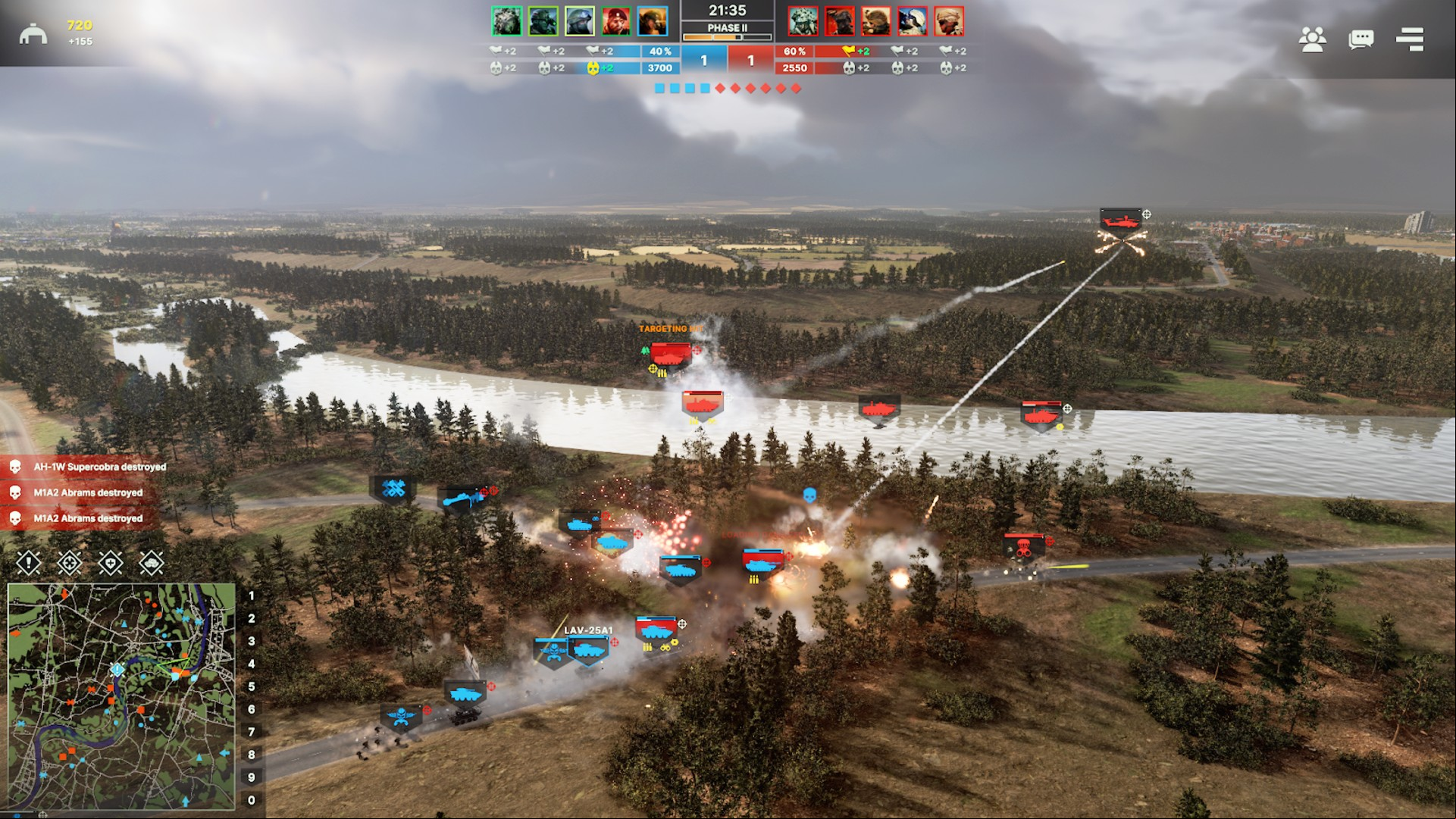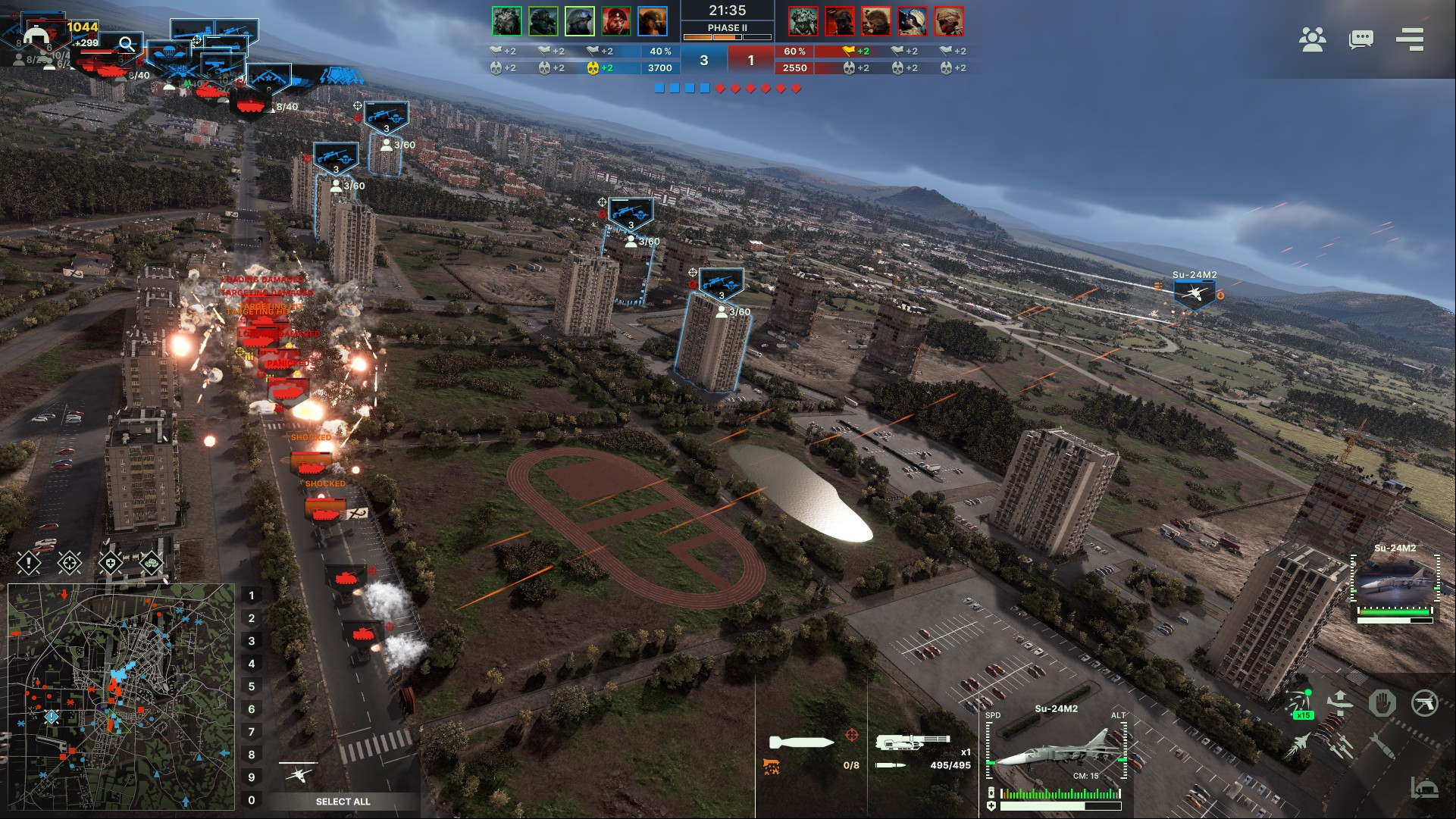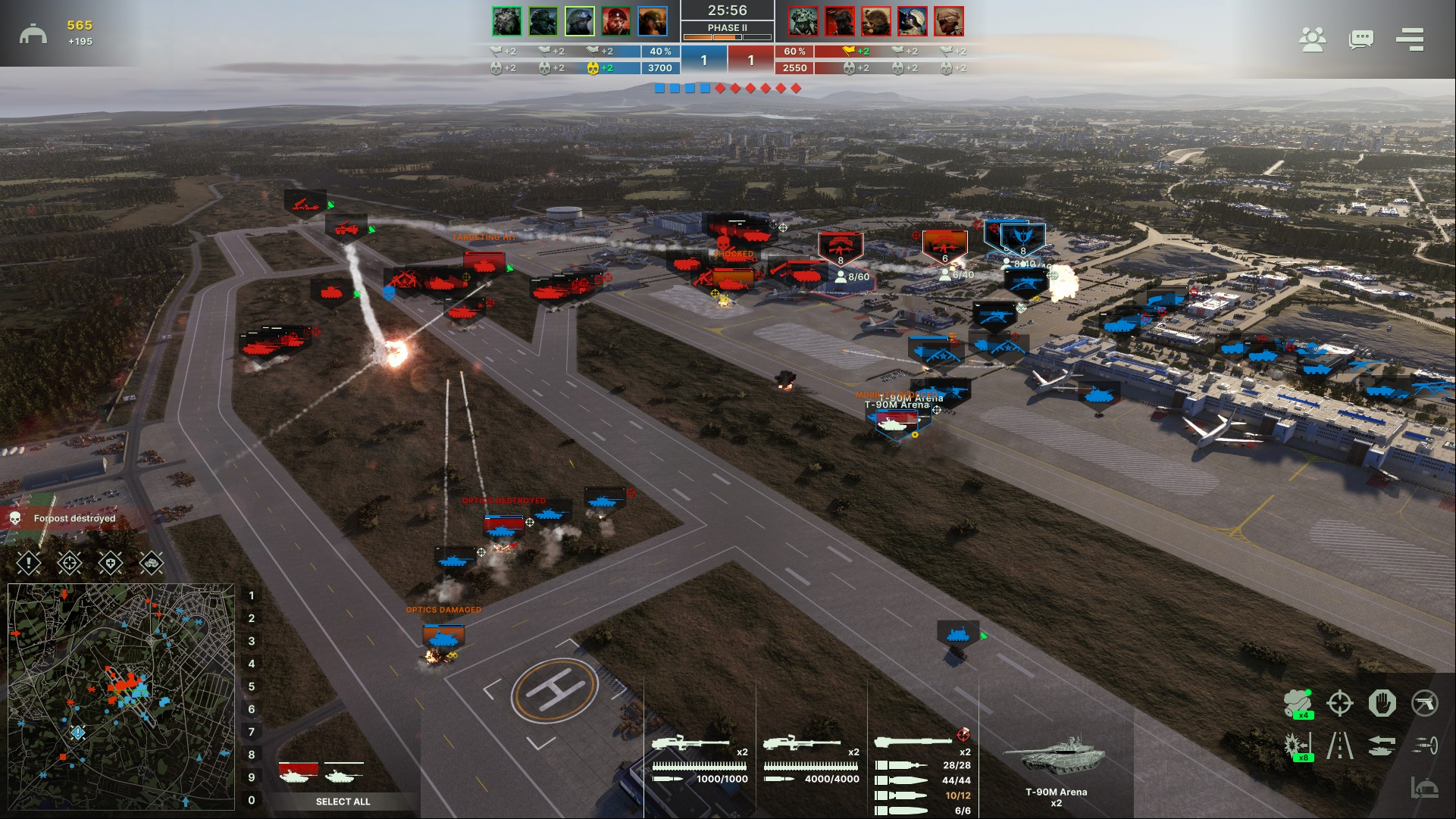Even as the most cast-iron acolyte of Command and Conquer, I know its battles can often feel too fast, too simple, and too fluid. For a more authentic military strategy experience, it's best to go elsewhere: Warno, Steel Division, the classic World in Conflict. But then I come up against another problem. These games are detailed, and rooted in more 'realistic' aesthetics and mechanics, but that sometimes makes them inscrutable. They're slow and complex; by design, they're hard to get into, and can feel too much like work. I want C&C. But I also want something that feels more grounded, and more tactically demanding – but then I also don't want a simulation game. Broken Arrow is the first RTS to successfully walk the line.
The maps are based on actual locations. All the units are fastidiously detailed, and modelled on their real-world counterparts. There's no instant building in Broken Arrow. When you need reinforcements, you have to call them in and wait for them to reach your position. Combat is simultaneously large-scale and minute, a combination of macro and micro. In my most recent multiplayer match (separate to Broken Arrow's extensive campaign), my team and I divided the map into informal sectors. It was my responsibility to protect the easternmost flank, designated as site C. I surrounded it with tanks; the enemy blew them to pieces with artillery and helicopters. I re-established air superiority with a sortie of jets; my opponents moved SAM sites into the trees, and shot my planes down.

For 60 minutes or more, we fought a hellish war of attrition, ing control of site C back and forth over a mounting pile of bodies and burned-out vehicles. But eventually it came down to the control of a single building. By moving my infantry into a tower block that overlooked the main square, I could offer effective cover to my armored units on the ground, and repel any counterattacks before they got too close. In combination with the booming sound design (you see the flash of an explosion, then a second later get the low, ominous rumble, like you're watching a news broadcast from the frontline), Broken Arrow's attention to strategic detail, whereby sheer force is never an option, makes it feel suitably close to a military simulation game.
As well as efficiently combining units and attempting to predict enemy counterattacks, you also need to factor transportation times and the firmness of available cover – a partially destroyed building will do less to protect the troops inside. On the contrary, Broken Arrow is still simple, accessible, and makes an instant kind of mechanical sense. I didn't do the tutorial. In fact, I didn't do any onboarding whatsoever. But within five minutes of multiplayer, I understood Broken Arrow's menus, map, and systems – it has the same swift usability of Command and Conquer's classic drag-and-drop mechanics. And by that measure, it feels more like an RTS game.

It's 15 years since the release of Command and Conquer 4, and naturally a lot of strategy game fans are looking for something that fills the Westwood gap. Broken Arrow director Felix Habert and the rest of the team at developer Steel Balalaika are aware of that, and there are parallels to be drawn between Broken Arrow and C&C. However, the similarities are mostly in subject matter. Mechanically and in of scale, Steel Balalaika's game is considerably different.
"The comparison [to Command and Conquer] is mostly based on the setting because there are very few games daring to tackle the topic of modern military conflicts," Habert tells PCGamesN. "But the comparison stops here. C&C is a very classic RTS based on resource gathering and production of units in buildings. Broken Arrow's gameplay is actually much closer to World in Conflict where your reinforcements arrive directly on the battlefield. And there are no off-map assets; everything is on the map, including artillery, planes, cruise and ballistic missiles, and even nuclear bombers.

"All our maps are based on real places – the story of the campaign happens in the Baltic region so we have most of the key cities represented, as well as strategic targets like harbors, air bases, airports, a nuclear power plant, and a dam. We try to be as faithful to the places as possible by keeping the scale intact, and the road networks, forests, and building placements identical. We are not precise to the house, but to the city block. If you place our maps and a satellite picture side by side you should recognize the place without problem.
"We love realism, but Broken Arrow is not trying to be a simulation, nor a history lesson," Habert continues. "Realism is not a goal but a tool at our disposal, a common language between us and the players to help them understand the game mechanics faster. But I must confess that we have a little problem in that domain: we take everything. The game was initially supposed to have 200 units tops, but every time we see something new in a military expo, we want to add it to the game. And now we're nearing 350 units and thousands of customization options."

Scheduled to be released in June, as well as the balancing act between simulation and playable RTS, Broken Arrow also has to contend with an emerging wave of military strategy games. It's a thriving sub genre. Tempest Rising feels like a faithful (but still suitably distinctive) homage to C&C. Warno carries the spirit of World in Conflict. And then there are more targeted, niche efforts like Armored Brigade, Sea Power, and Regiments. How does Broken Arrow stand apart? Given its combination of RTS and simulation gameplay and its grounded, real-world presentation, Habert doesn't seem concerned.
"I don't think there is that much competition," the director says. "None of these games have a realistic modern setting. It's always either historic or fantasy. That's why we wanted to make this game in the first place. We are players before being game developers and if a real-time strategy game with great visuals and sound set in a modern environment already existed we would probably be playing it right now instead of making it."
